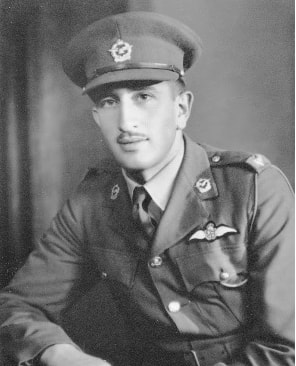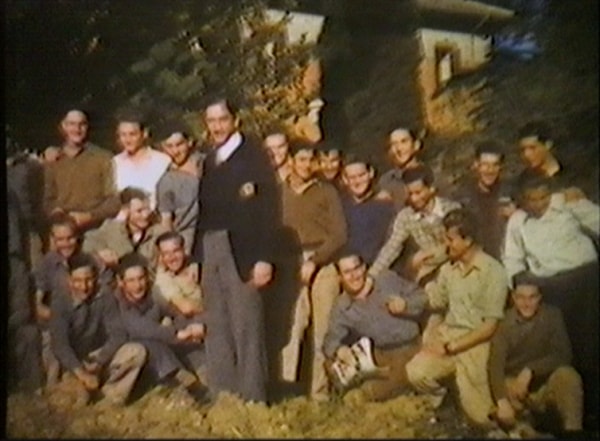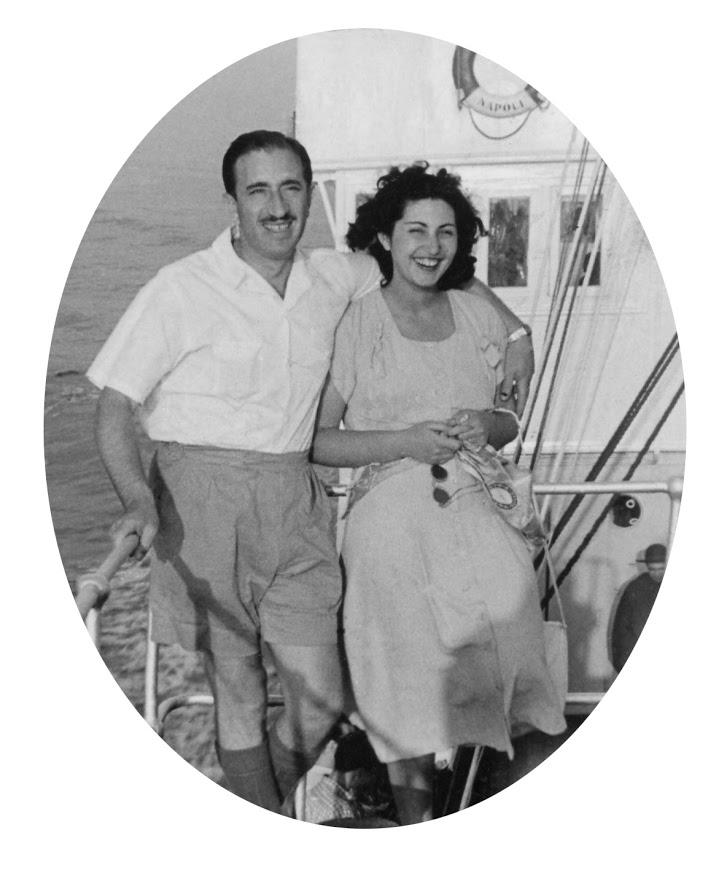 Jack Weinronk was born in Port Elizabeth, South Africa on16th July, 1915.
Jack Weinronk was born in Port Elizabeth, South Africa on16th July, 1915.
Jack received his Civil Pilot’s License on 4th May 1937. When World War II broke out, he tried to join the South African Air Force, but being just over 24 years old, he was told he could be an observer or gunner but not a pilot as he was too old. He joined the Mechanical Transport Unit, and in September 1940, when the age limit was raised to 30 he immediately transferred to the South African Air Force. He was awarded his “wings” and a commission on 26th September 1941 and was posted to a Navigational Training School where he flew mainly RAF pupils on navigation exercises.
He served as pilot in light bomber squadron, Squadron 24 from December 1941 until April 1943, serving in the North African Campaign.
Jack wrote a book: “The Vaulted Sky”, about his experiences based on his daily diary entries,
Jack married Sarah in Johannesburg in August 1948. Herewith an extract from his book relating to his experiences as a volunteer in Israel’s War of Independence:
“After the war, in 1948, when I was only married nine months, I went to give Israel a hand in its first big war against the Arabs who had attacked them as soon as Britain pulled out of Palestine. I had my commercial license at that stage, although I had not flown commercially.
In a certain country I was asked to take a load of goods to Haifa with an American pilot. We landed on the drome (aerodrome) at Haifa and had hardly drawn to a stop when a United Nations man drove right up to the plane. He opened the door, banged it closed, and said: “I’m going to get the Mediator”. Off he spent and the Duty Pilot told me to quickly taxi to a hangar for the goods to be off-loaded, and then to park near a store. When asked what I had brought I should say “parts for Pipers”. I did this and had hardly got out of the plane when the UN people arrived and the man who had spoken to me said: “I told you not to move the plane”. I replied, pointing to the Duty Pilot: “That man said they were in a hurry for the things and told me to taxi here”. The UN man said, “….I told you not to move the plane. The UN is in charge of all aerodromes in Palestine. You take your instructions from them, not from those people”. I said “I’m sorry I did not know that”. He then asked what I had brought and I told him “parts for Pipers”. We all marched into the store and there we saw propellers, parts of engines, material, etc. They then left.
I stayed in a small hotel not far away. A dance was in progress and it was interesting to see boys and girls dancing with Sten guns over their shoulders. I could not get any petrol as they needed it for themselves. I landed at Famagusta in Cyprus where we refueled. The flight back was without incident.
I got back to my departure point and was asked to take over a small flying school that had been secretly set up by the Haganah at the Urbe Airport near Rome, Italy. It was going to be enlarged. I was made Commanding Officer of the school, but in reality I was Chief Flying Instructor, as I had nothing to do with the Navigation Section. The instructors were ex-Air Force pilots from various countries. In addition to having my own pupils, I had to test each student before he went solo, and send him off on his own. I occasionally had anxious moments. I had to do wash-out tests on pupils whose instructors felt they could not be turned into pilots. This was a very unpleasant job but it had to be done. Some, whom I felt it was worthwhile extending their training time, I put back to flying, and others I unfortunately had to wash-out.

Jack in 1948 with some of the volunteers and instructors
On one occasion, a “big shot” came to me and said I couldn’t wash-out a particular student because his father was an important person. I replied, “All right, I’ll put him back to flying but if in a couple of weeks’ time he kills himself, remember who killed him. You, not me”. He thought for not more than a second and said, “Don’t let me interfere in your business. You do what you have to”.
We were extremely fortunate during the time that I was in charge. We had three incidents. In one, two students touched wings slightly when taxiing. The damage cost 50 dollars which gives you some idea of how minor the accident was. The second was when a student taxied off the runway and tore the fabric slightly on a stake sticking out of the ground, and the third could have had disastrous results. A student with two-and-a-half hours flying experience had an engine cut out at about 200 feet. We saw him go down and drop out of sight. At the end of the drome, in the direction in which he was flying, there was quite a deep valley and he disappeared into this. I grabbed a plane and flew over the spot. Lo and behold, instead of seeing a mangled wreck, I saw the plane standing in a field the size of a postage stamp. He had landed in a field of what looked like maize or Lucerne with long stalks. I saw the pupil surrounded by people who had gathered. I went back to the drome, got a jeep and, with the chief mechanic, raced to the landing site.
Just picture this; a high-tension wire was strung from side-to-side of the ravine, at about half the height of the hills. About 30 feet before the end of the field was a telephone wire about 12 feet in height, strung the same way. I turned to the pilot, congratulated him on his emergency landing, and said, “How you got under the high tension wire, over the telephone wire and landed in a field this size, I’ll never know”. With a look of bewilderment he said “What high tension wire; what telephone wire” and turned to look. He’d negotiated these obstacles without even seeing them. Again I wonder whose hands were on the controls.
The mechanics repaired the engine and we manhandled it on to the road and took off, no problems”.
Jack & Sarah Weinronk, Italy 1948

Here is a short film of flying over Italy and some of the trainees at the Flying School: https://www.youtube.com/watch?v=V-vE0ICLPZU
After the war, Jack returned to Port Elizabeth with his wife Sarah (who had joined him in Italy.) They raised four children – Brian, Jennifer, Eileen, and Stan. Jack passed away in 2003.
① Jack got the “Cobber” part of his name upon his arrival at Central Airforce Training Depot in 1940: “We were scheduled to have a lecture on the theory of flight. The lecturer wasn’t there so they asked me to stand in. (The first Ace of Second World War was a New Zealand Mauri named Cobber Kane who was killed subsequently.) After I had finished my lecture someone declared “Cobber Kane has come to life again”. From then on I wasn’t called Jack anymore.”
Source: Jack’s son Stan Weinronk and Jack’s book “The Vaulted Sky”.

